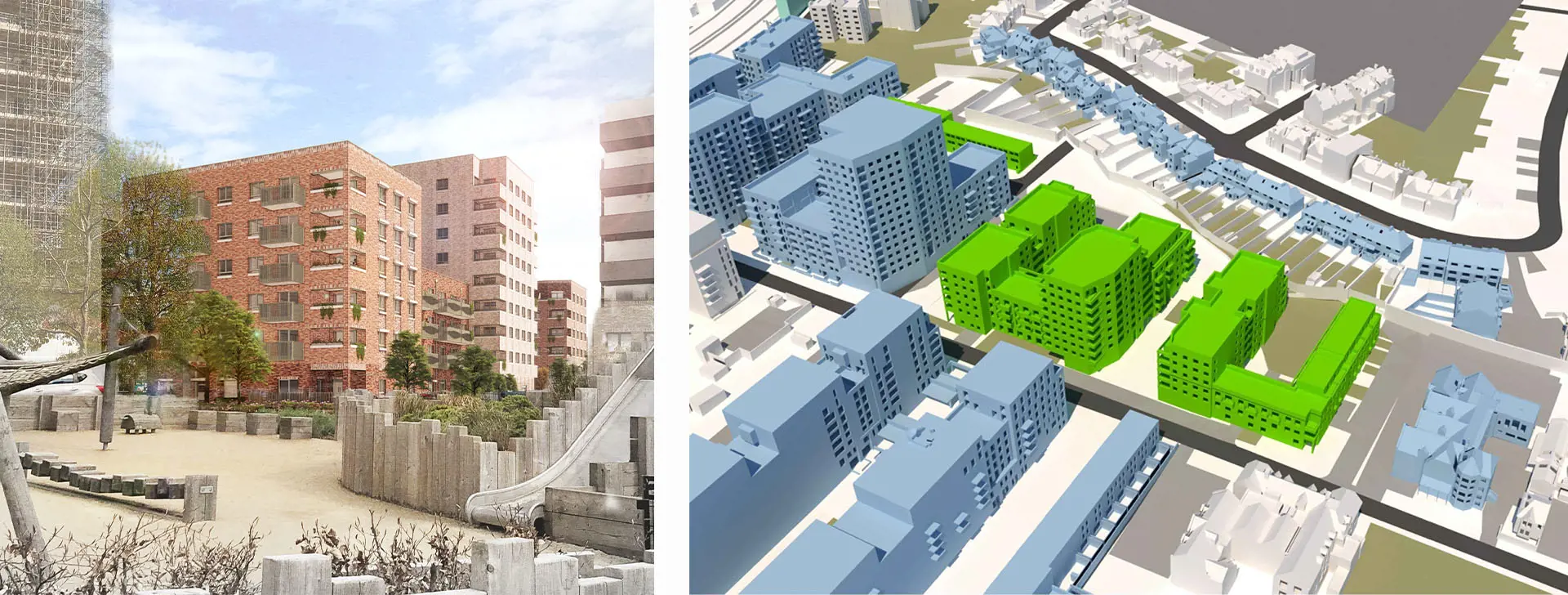The publication of the revised BRE Report (BR 209) in June 2022 caught most planning authorities by surprise and highlighted a need for guidance and training on daylight and sunlight matters amongst Planning Officers. Lichfields received requests for, and provided, CPD sessions to Planning Officers within Local Planning Authorities across the UK, the Greater London Authority and the Planning Inspectorate along, alongside requests from architects and developers. These sessions, particularly those with Planning Officers, created opportunities to discuss the practical application of the new guidance.
Outside of the need to understand the revisions, CPD sessions allowed officers to voice their frequent concerns regarding reliance on reports supporting developments. These concerns were in some instances drawn with reference to the ‘Rainbird’ ([2018] EWHC 657) and ‘Guerry’ ([2018] EWHC 2899) cases, where planning permission was quashed by the courts due to errors and misleading statements within the daylight and sunlight reporting. What was clear was a need to be able to provide clear and robust guidance for committee members that Planning Officers had confidence in presenting. Amongst Planning Officers and committee members there can be a distrust of daylight and sunlight reports, particularly where they contain little interpretation of data or discussion where transgressions are noted other than assurances that these are ‘typical’.
The revisions created significant confusion within a field that was already seen on the whole as a bit of a ‘dark art’. The realisation that the revisions did not impact on the tests applied to neighbouring properties was mostly treated with relief. However, the changes regarding how proposed dwellings should be tested emphasised the many misconceptions and preconceptions held by those required to draw conclusions from analysis undertaken by others. Discussions on the new methodologies highlighted the limitations vertical sky component and no sky line testing pose in judging perceived daylight within rooms with the general refrain being ‘but what does it mean?’
Discussions on the new assessment methods centred on which of the new daylight tests (Daylight Factor and Spatial Daylight Autonomy - Illuminance) is the preferred test and confusion over whether both are required. It was clear that, if presented correctly, the illuminance method was more relatable to personal experience than the daylight factor method. There were also concerns and misconceptions that the daylight factor method was the same as the average daylight factor method previously used.
The new guidance also introduces the UK Annex, a new testing metric for ‘hard to light’ dwellings. This element of BS EN 17037 introduces UK only daylight targets which are aimed at properties where daylight access is restricted due to location and external limiting factors such as existing tree cover or within basement rooms. There is confusion over the use of the UK Annex and the alternative targets given. The BRE Report states that the UK Annex gives minimum recommendations for habitable rooms in the UK but also states the targets are intended for ‘hard to light’ dwellings. As such, reliance on the UK annex targets was not considered to be appropriate in all cases - can rooms at the upper stories of proposed tall buildings really be considered as ‘hard to light’. Reliance on the UK Annex alone, without justification, was seen as another element that generated distrust of daylight and sunlight reports.
Looking back through discussion notes the received commentary can be summarised as follows:
-
Are the new standards harder to achieve?
-
Concern over manipulation of the results and how they are presented,
-
How do the new methodologies tally with ‘appropriate’ daylight and sunlight arguments?
-
What factors are in the control of officers to improve results?
-
Is the UK Annex an appropriate target?
-
The need to present all results clearly with supporting justification where necessary.
Overall, the changes, once understood, were welcomed. There is a need to ensure that all analysis is presented clearly and, where necessary, relevant justification for deviations is discussed. There is an element of distrust of daylight and sunlight reports and more planning authorities will be seeking third party reviews of submitted analysis. The Lichfields team is being approached far more frequently than previously by planning officers to undertake such reviews.
The revisions to the BRE Report present an opportunity to provide greater design input as schemes progress. There is an opportunity to tie assessments into other design concerns such as overheating and sustainability and a greater co-operation between consultants should become the norm. Again, the opportunity for early daylight and sunlight analysis to inform the design process and a more collaborative cross-disciplinary approach to natural light and other disciplines is to be welcomed.
It is also clear that, while the testing of impacts on neighbours has not changed, there needs to be greater clarity and justification when presenting effects to assist Planning Officers and Committee Members. Use of illuminance and the revised sunlighting testing provides analysis results and imagery that are more easily grasped by the lay person. They show that there needs to be an educational element to reports and liaison with officers if support for a scheme is to be obtained.
The Lichfields Natural Light team has become adept at running the new testing methods, informing the design process and presenting results in a clear and accessible manner. We strongly advocate early inclusion of daylight and sunlight testing in the design and pre-application processes to help de-risk projects. Taking design teams and Planning Officers through the testing journey, explaining the new guidance and interpreting daylight and sunlight results with clarity promotes assurance in the final design, secures trust from Officers and allows schemes to be presented confidently at committee.



